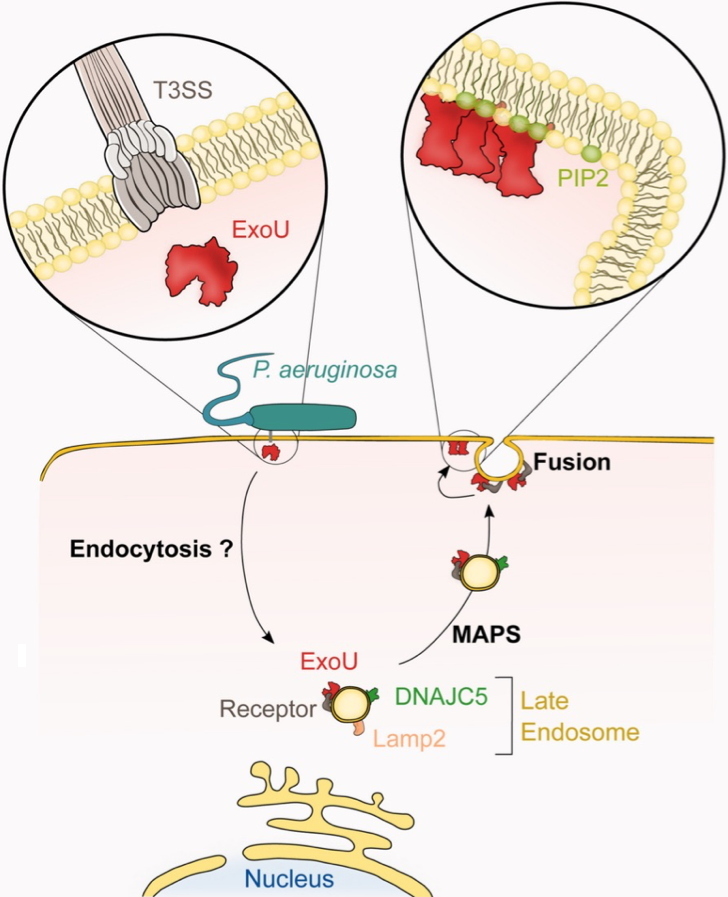Pseudomonas aeruginosa is an
opportunistic pathogenic bacterium causing nosocomial acute infections, as well as fatal chronic infections in cystic fibrosis patients. Clinical isolates are frequently multi-resistant to antibiotics, which complicates the management of infected patients.
P. aeruginosa possesses an arsenal of virulence factors, the most active of which is an
injectisome that injects toxins directly into target cells. ExoU is the most harmful toxin injected by this system. Its necrotizing action is linked to its phospholipase activity (
Figure) that causes the rupture of the plasma membrane of the host cell, and results in severe lesions in infected tissues.
To carry out their biological activity, bacterial toxins often hijack molecules or mechanisms of the host cell. IRIG researchers used a genetic screen employing CRISPR-Cas9 technology to search for genes that might be involved in ExoU toxicity. Only one such gene was identified! This gene encodes the human DNAJC5 protein, which is known to play a central role in the secretion of some cytoplasmic proteins
via an unconventional vesicular transport system (
MAPS). The researchers demonstrated that DNAJC5 guides the toxin to the plasma membrane of the host cell, where ExoU can exert its toxic activity (
Figure). They showed that cells deficient in DNAJC5, or Drosophila in which the DNAJC5 gene
orthologue was down regulated, are largely resistant to ExoU toxicity.
The transportation system provided by the DNAJC5 protein is thus the Achilles heel of
Pseudomonas aeruginosa's ExoU toxin. This discovery could be used to prevent the devastating action of ExoU in acute
P. aeruginosa infections.

Vesicular trafficking of ExoU in the infected cell.
After being injected into the host cell by
P. aeruginosa type III secretion system (T3SS; also called
injectisome), ExoU is taken up by late
endosomes that are involved in a specific secretion system called
MAPS. In this system, the vesicles are transported to the cellular periphery and fuse to the plasma membrane. ExoU ends up on the inner side of the plasma membrane, where it interacts with the phospholipid PIP2, which modifies ExoU structure and triggers its phospholipase activity.
An opportunistic pathogenic bacterium is able to cause disease as a result of a reduction in the body's defenses.
The injectisome, or type III secretion system (T3SS), is a virulence system present in some pathogens that allows them to inject toxins into the cells they infect.
MAPS is a recently discovered secretory system for misfolded cytosolic proteins.
Ortholog describes similar genes present in two different species. These genes originate from the same ancestral gene and have retained identical structure and function throughout evolution. An endosome is a small spherical structure (a vesicle) that traffics in the cytoplasm.